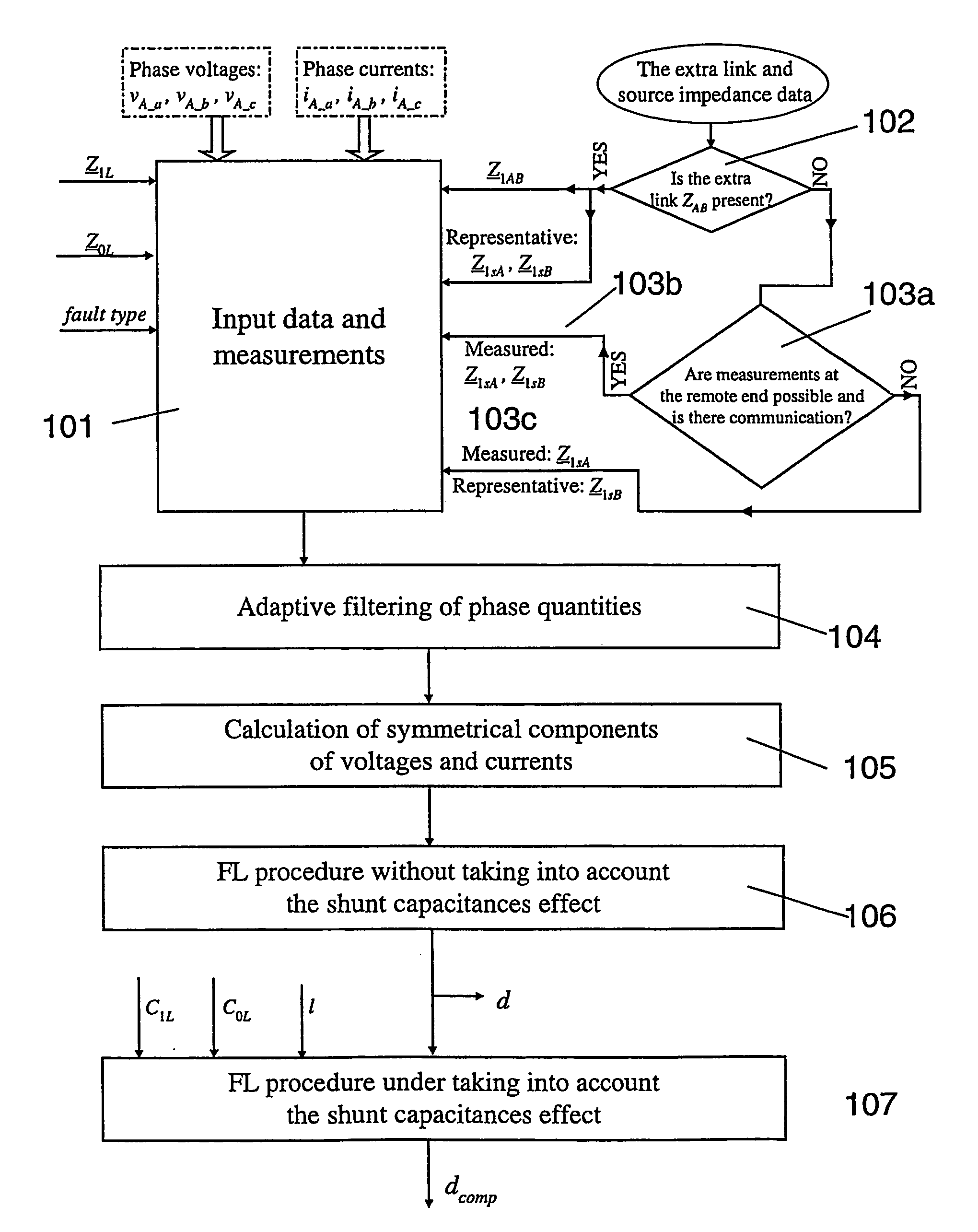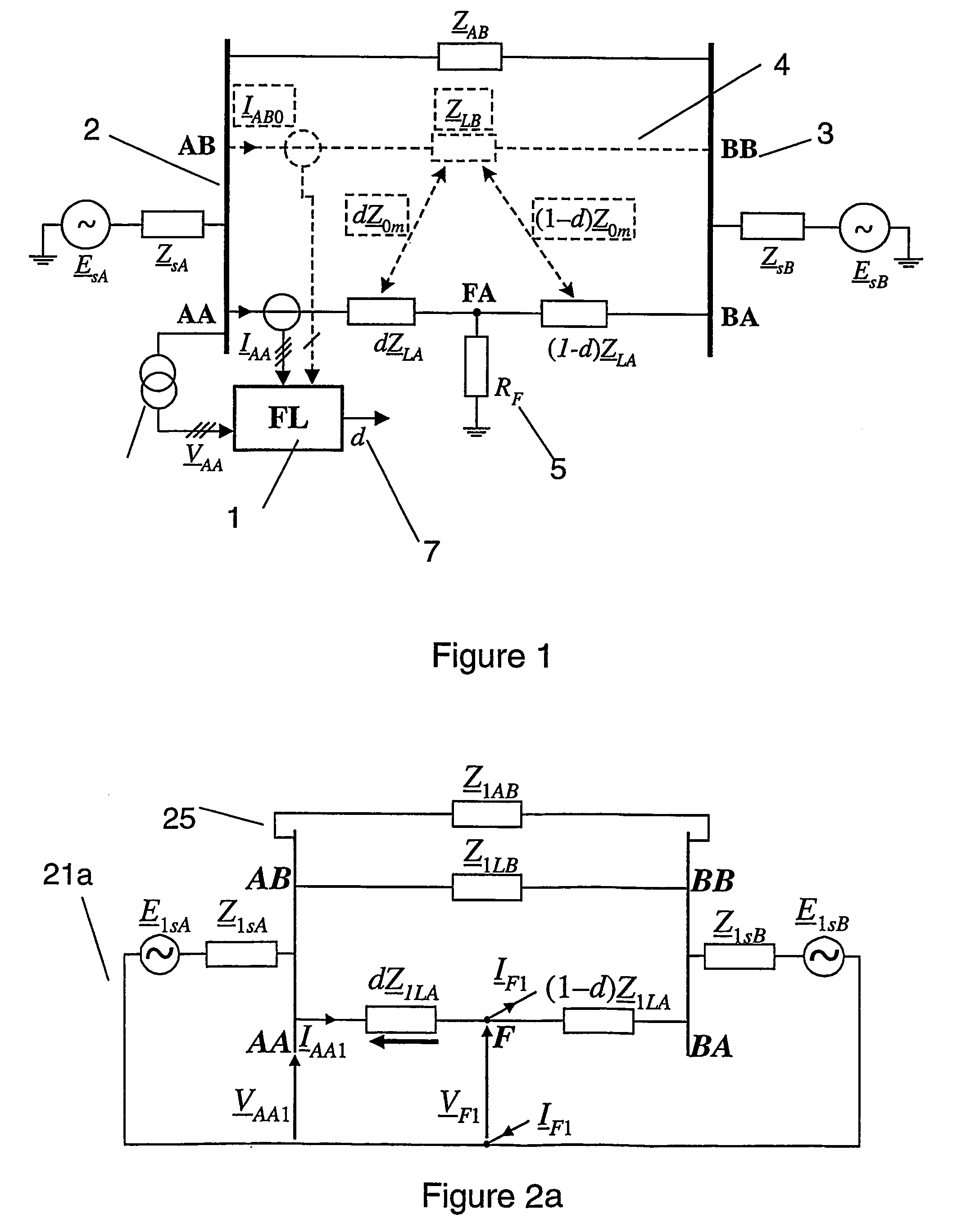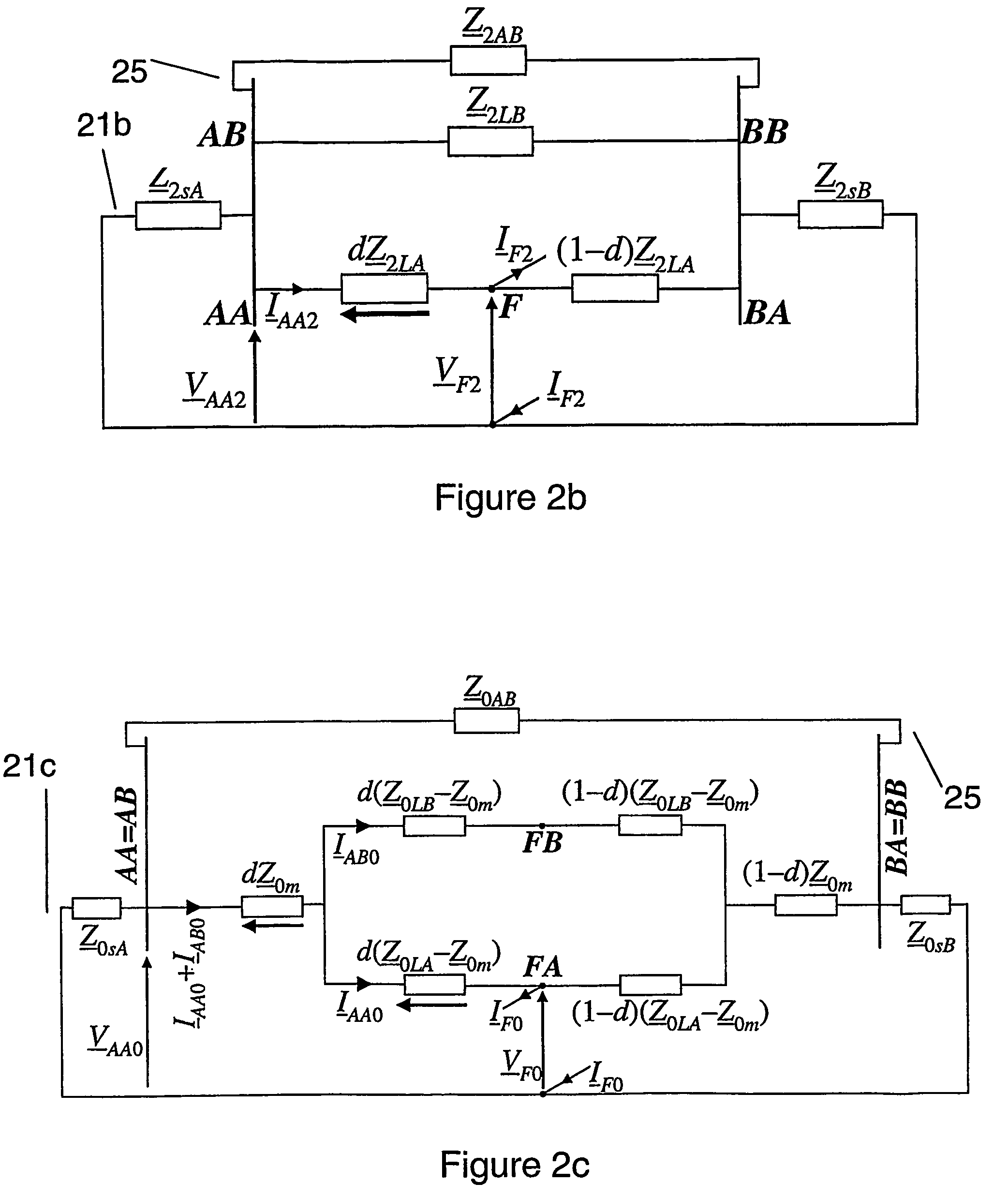Fault location using measurements of current and voltage from one end of a line
a technology of current and voltage measurement and fault location, which is applied in the direction of fault location, fault location by conductor type, instruments, etc., can solve the problems of relatively difficult to compensate for shunt capacitance effects by using these values, and difficult to obtain accurate pre-fault quantities. , to achieve the effect of facilitating the compensation of shunt capacitance and improving accuracy
- Summary
- Abstract
- Description
- Claims
- Application Information
AI Technical Summary
Benefits of technology
Problems solved by technology
Method used
Image
Examples
Embodiment Construction
[0035]FIG. 1 presents a schematic diagram for one-end fault location applied for parallel lines and for a power transmission or distribution system with a single line. A fault locator 1 is positioned at one end 2 of a single line AA-BA 3 or parallel lines AA-BA, AB-BB, 4. A fault F is shown at FA with a corresponding fault resistance, 5, denoted as RF. A value for distance to the fault d from one end 2 determined and provided by the fault locator 1 is indicated with the reference number 7. Components such as parallel line AB-BB and quantities such as a parallel line value zero sequence current IAB0 shown with dotted lines are excluded when considering a single line case.
[0036]The fault locator 1 positioned at the first end 2, or ‘A’ end, is supplied with the following input signals:[0037]three-phase voltages (VAA) of the faulted line,[0038]three-phase voltages (IAA) of the faulted line,[0039]zero sequence current (IAB0) from the healthy parallel line (zero sequence is not present wh...
PUM
 Login to View More
Login to View More Abstract
Description
Claims
Application Information
 Login to View More
Login to View More - R&D
- Intellectual Property
- Life Sciences
- Materials
- Tech Scout
- Unparalleled Data Quality
- Higher Quality Content
- 60% Fewer Hallucinations
Browse by: Latest US Patents, China's latest patents, Technical Efficacy Thesaurus, Application Domain, Technology Topic, Popular Technical Reports.
© 2025 PatSnap. All rights reserved.Legal|Privacy policy|Modern Slavery Act Transparency Statement|Sitemap|About US| Contact US: help@patsnap.com



